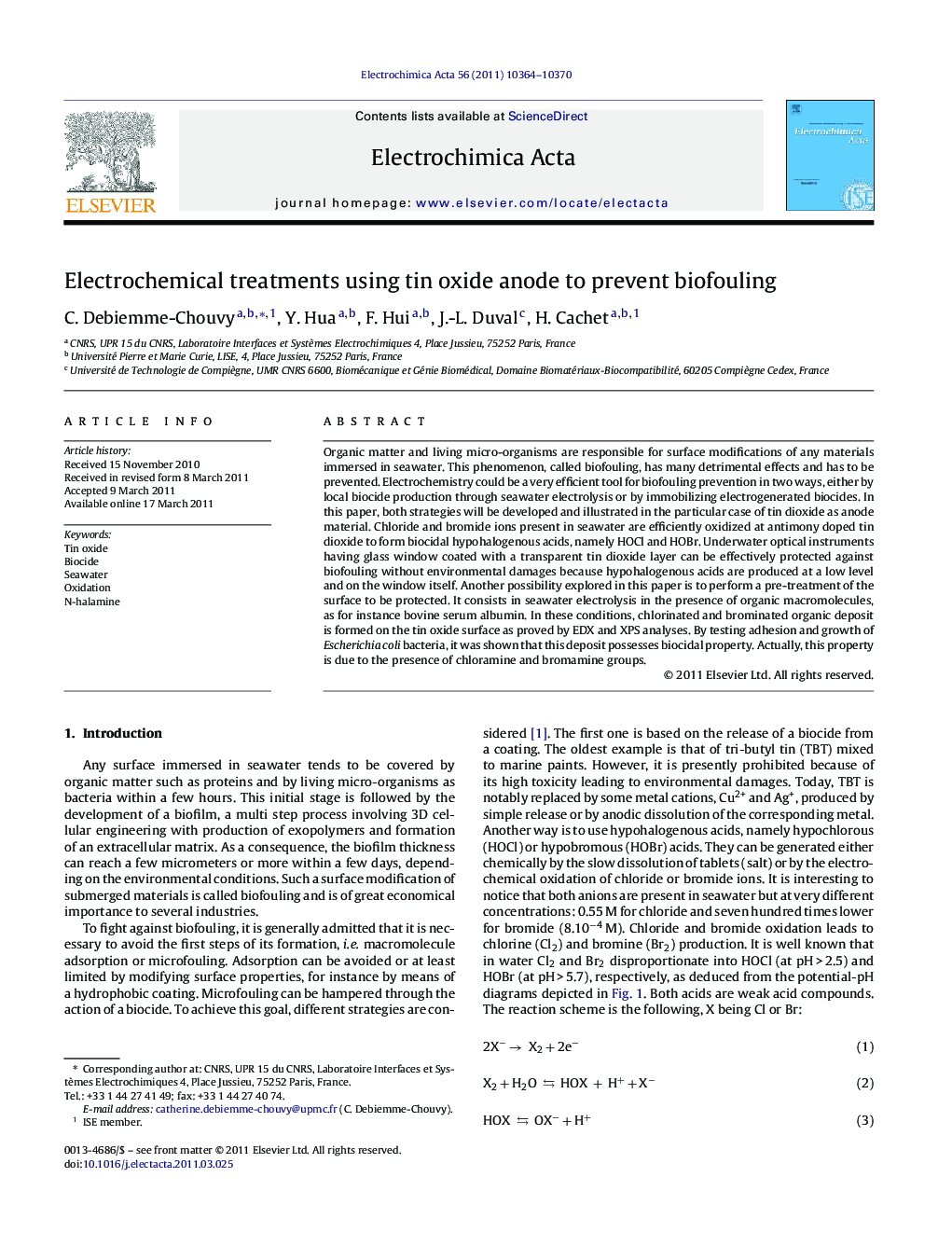| کد مقاله | کد نشریه | سال انتشار | مقاله انگلیسی | نسخه تمام متن |
|---|---|---|---|---|
| 190090 | 459692 | 2011 | 7 صفحه PDF | دانلود رایگان |

Organic matter and living micro-organisms are responsible for surface modifications of any materials immersed in seawater. This phenomenon, called biofouling, has many detrimental effects and has to be prevented. Electrochemistry could be a very efficient tool for biofouling prevention in two ways, either by local biocide production through seawater electrolysis or by immobilizing electrogenerated biocides. In this paper, both strategies will be developed and illustrated in the particular case of tin dioxide as anode material. Chloride and bromide ions present in seawater are efficiently oxidized at antimony doped tin dioxide to form biocidal hypohalogenous acids, namely HOCl and HOBr. Underwater optical instruments having glass window coated with a transparent tin dioxide layer can be effectively protected against biofouling without environmental damages because hypohalogenous acids are produced at a low level and on the window itself. Another possibility explored in this paper is to perform a pre-treatment of the surface to be protected. It consists in seawater electrolysis in the presence of organic macromolecules, as for instance bovine serum albumin. In these conditions, chlorinated and brominated organic deposit is formed on the tin oxide surface as proved by EDX and XPS analyses. By testing adhesion and growth of Escherichia coli bacteria, it was shown that this deposit possesses biocidal property. Actually, this property is due to the presence of chloramine and bromamine groups.
► Biofouling prevention due to localized seawater electrolysis at tin oxide anode.
► Biocidal hypohalogenous acids electrogenerated at Sb-doped tin oxide in seawater.
► Formation of chloramine and bromamine groups onto macromolecules.
► Protein modification by seawater electrolysis leading to antimicrobial deposit.
Journal: Electrochimica Acta - Volume 56, Issue 28, 1 December 2011, Pages 10364–10370